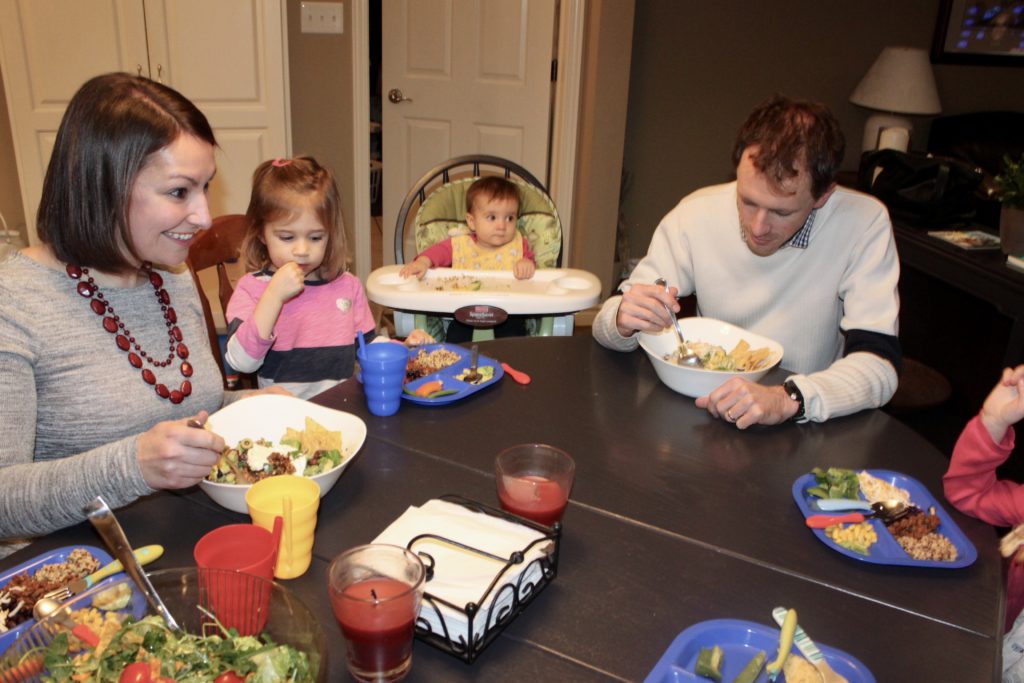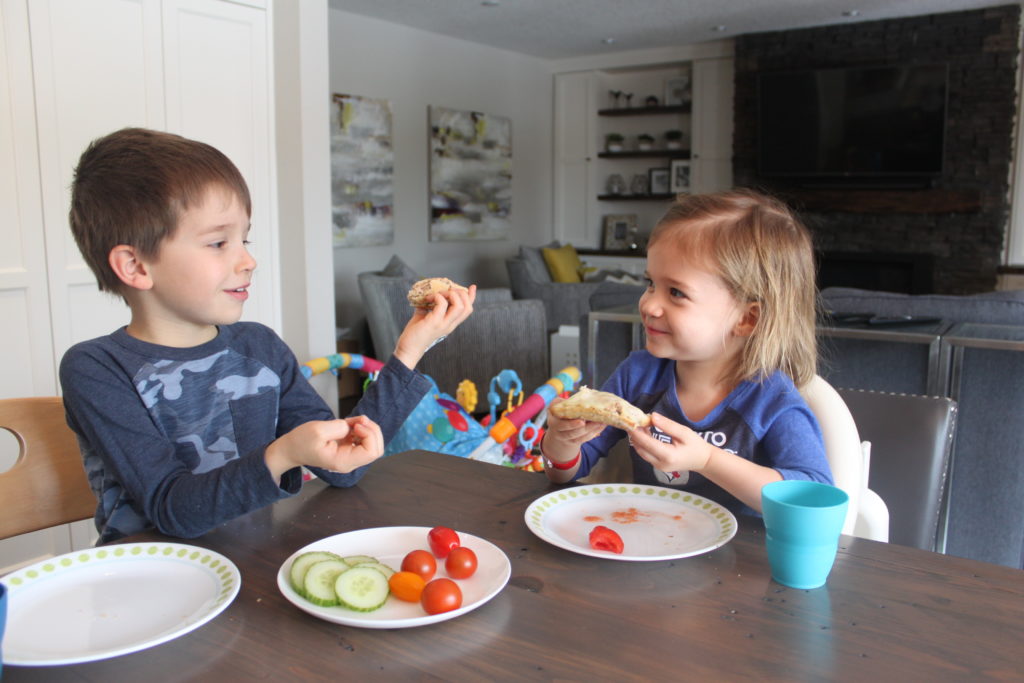When it comes to feeding kids, it can be so easy to get caught up in exactly what’s going on their plate. Because in the most ideal scenario, this is exactly what will end up in their little tummies.
Here’s a less ideal scenario: You spend your limited time and energy cooking healthy, veggie-heavy dishes, which you then try to convince (beg/bribe/force) your kids to eat. When they won’t even try it, you end up giving them a bowl of cereal just so they won’t starve.
Building healthy eating habits starts at home
Wait a second…this doesn’t sound all that ideal, does it? The big problem with this scenario, is that it’s not all that fun to force our kids to do anything — and it usually doesn’t work! It’s a lot less effort, and a lot more effective, if they actually choose to eat those healthy foods that we put in front of them
I know what you’re thinking. Sure, that sounds great Sarah…but how do I actually achieve this?
You need to start by shifting your focus!
When it comes to helping our kids develop any healthy habit, eating or otherwise, focusing on what you can’t really control isn’t going to do much — except make you frustrated. Instead, focus on what you can control, which is the environment in which the habit is being formed.
Case in point: When it comes to sleeping, we can’t force kids to fall asleep (darn!) – but we can adapt their environment to make it more conducive to sleep. We can turn down the lights, make sure the room is the right temperature and use a white noise machine to drown out external noise.
It’s the same when it comes to feeding!
We can’t force our kids to eat what we put in front of them (darn again!), but if we want to that healthy food to end up in their tummy without a fight, we CAN create an environment that is more conducive to healthy eating.
How exactly? Let’s look at my top 4 tips for creating a healthy eating environment that will set your kids up for feeding success:
1. Eat at the table
I know it’s tempting to let kids eat dinner in front of the TV, or in the car on the way to hockey practice. I appreciate efficiency, too! However, making an effort to eat meals (and even snacks) seated at the table is a habit worth establishing.
It help kids focus on eating, so they’ll eat more quantity and quality-wise. You can serve a wide variety of healthy food when it doesn’t have to be portable or easy to eat with one hand.
Bonus: when you make eating at the table your normal, you’ll be much less inclined to swing by that drive-through.
Now, of course, this isn’t going to be possible 100% of the time. Life gets busy, and meals on the go are going to happen the crumb-filled backseat of my car is proof of this!) Make it a goal to eat at the table as much as is possible for your family.
2. Eliminate distractions
Speaking of TV, kids watching their favourite cartoon while eating is a no-no, even if they can see the TV while sitting at the table. The same goes for iPads, smart-phones or any other distraction. Ask yourself: Do you want your child to learn to eat mindlessly, without paying attention to what they’re eating or whether they’re even hungry?
The answer is NO!
Sure, you might be able to sneak something in because they aren’t paying attention. But this doesn’t help them learn to like healthy foods in the long run — a goal worth striving for. For some kids, eliminating distractions cold turkey might be tough. Come up with an elimination plan that will slowly phase out the distraction, without creating anxiety.
3. Eat together as a family
You’ve probably heard this before, but it’s worth repeating. Eating meals together as a family makes a huge impact when it comes to raising healthy eaters. The family meal gives your children an opportunity to see you eating and enjoying a wide variety of real food. This influences their food preferences and the overall quality of the food they’re going to eat long-term.
We’ve already established that kids should be eating at the table, which is more enjoyable if there are other people sitting there with them. Keep in mind that it doesn’t have to be all or nothing. My husband works out of town and is home late or gone altogether most nights. We certainly don’t manage a full family dinner every night.
Work towards structuring your schedule so you are eating at times that are convenient for the most number of people in the family. If you can’t do dinner, try fitting in breakfast together. Just do the best you can!
4. Make meals fun
If you have to force your child to come to the table because it’s a snooze-fest, do you think they’re going to be excited about eating? I like to remind parents: mealtime doesn’t have to be so serious. A simple way to add a little more fun at mealtimes? Include the kids in the conversation.
Trust me, I know dinner may be the first time that you and your hubby have had chance to catch up. However, a discussion on filing your taxes or fixing the oven might not be the most captivating topic of conversation for your kids.
Try this instead: talk about what they did at school, an upcoming family vacation or ask them about the best part of their day. Kids engaged in conversation are more likely to enjoy being at the table — and to try that new vegetable you’re serving.
The bottom line on embracing healthy eating tips for kids
So, before you try another strategy for making your kids eat their veggies, try focusing on their eating environment first. With a healthy eating environment in place, they just might start eating those veggies all on their own!









